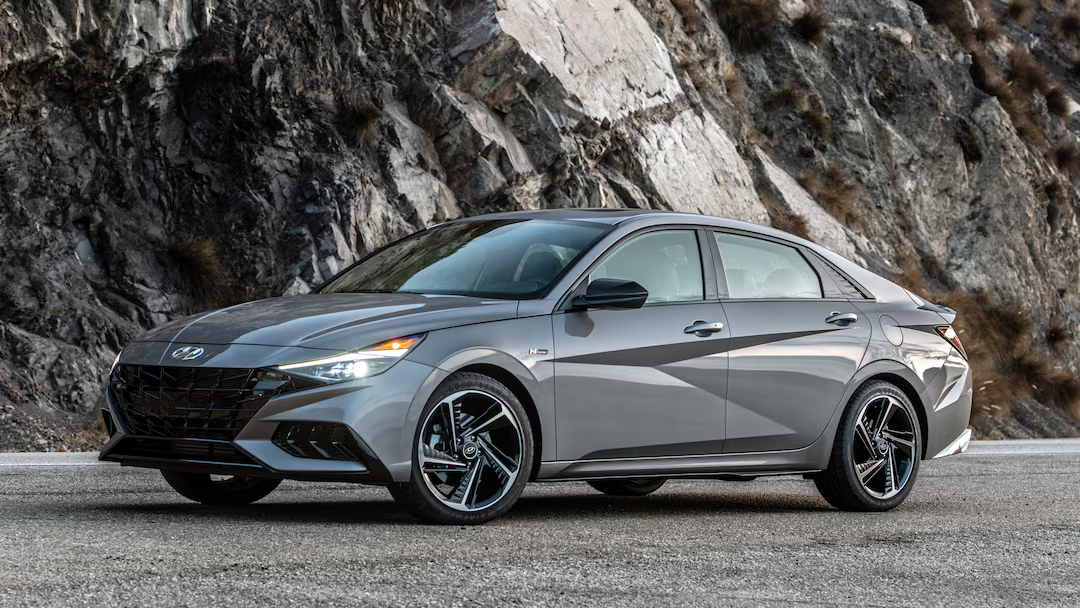Navigating busy city streets can be an overwhelming experience, with traffic congestion and limited parking spaces presenting daily challenges for many drivers.
A recent study revealed that urban drivers spend over 60 hours each year stuck in traffic. This makes selecting the right vehicle for city driving crucial. The ideal city car should be compact, fuel-efficient, and easy to maneuver, meeting the unique demands of urban environments.
In this article, we explore the top city cars and what makes them especially suited for life in the city. Whether you’re looking for the best car for city driving or simply seeking the best cars for the city, we’ll provide thorough insights to help you choose a vehicle that elevates your city living experience.
Top 5 Cars for City Driving
Without further delay, let’s explore the best city cars available today. We’ve included a varied selection to suit a wide range of preferences.
Traffic is the ultimate equalizer. No matter how powerful your engine or flashy your design, once you’re stuck in bumper-to-bumper chaos, the wrong car can turn every commute into a nightmare.
While some vehicles are built to thrive in tight spaces and slow-moving grids, others are simply not cut out for the daily grind of urban driving.
In this article, we’re cutting through the hype to spotlight five of the worst cars you can drive in traffic—whether it’s due to size, fuel economy, handling, or just plain inconvenience. If you’re looking for a stress-free ride through the city, these are the models you’ll want to steer clear of.
1. Honda Civic
The Honda Civic consistently ranks among the best cars for city living, thanks to its compact dimensions and excellent fuel economy. Its nimble handling and responsive steering make it an ideal vehicle for navigating congested traffic, while the thoughtfully designed interior provides ample space for both passengers and cargo.
Known for its long-standing reliability and low maintenance costs, the Civic offers a worry-free urban driving experience. Advanced safety features and modern in-car technology further enhance comfort and peace of mind for drivers and passengers alike.
The Honda Civic has been a mainstay in the compact car market since the early 1970s, which speaks volumes about its reputation as an efficient and affordable means of transportation.
Over the years, it has evolved, and today, the 11th-generation Civic continues to garner praise not only for its reliability but also for its engaging driving dynamics and a sleek, modern interior—one that has influenced the design language of other Honda vehicles.
For the 2025 model year, the Civic receives a series of updates including refreshed exterior styling, the introduction of a hybrid variant, and more enhancements that add to its appeal.
The latest changes to the Civic lineup include a revised front fascia and grille, darker restyled taillights, and a more efficient 2.0-liter engine. Notably, the 180-hp 1.5-liter turbocharged engine has been discontinued.
The Civic Hybrid will now be available in both sedan and hatchback body styles. It also features hybrid-specific spring and damper tuning, a noise reduction package unique to the hybrid, and hybrid-only exterior details like a body-colored headlamp garnish and a front lower spoiler.
For those opting for the Sport models, there’s now dark trim and black 18-inch wheels, while the Sport Touring Hybrid receives a machine-finished wheel design.
Inside, hybrid versions of the Civic get a reworked interior with a gray color scheme, standard front USB-C ports, and the option of Google built-in infotainment tech. New paint colors include Solar Silver Metallic, Urban Gray Pearl, Blue Lagoon Pearl, and Sand Dune Pearl.
With the Civic Hybrid returning to the lineup, Honda is bringing back a nameplate that was absent during the 10th generation. Previously, the brand positioned the Honda Insight as its hybrid compact offering, but with the Insight discontinued, the hybrid version of the Civic now fills that role as part of the model’s 2025 midcycle update.
Available in both sedan and hatchback versions, the Civic Hybrid fits seamlessly into Honda’s current strategy. The gasoline-only Civics have also been refreshed with styling cues that align with the hybrid, such as a wider lower air intake, thinner corner intakes, a revised upper grille, and new wheel designs.
As seen with the Accord and CR-V, Honda now reserves the hybrid powertrain for more upscale trims, while the lower-end trims stick with gas-only engines. Hybrid models also gain additional features, including an Individual driving mode, four levels of regenerative braking controlled via paddles on the steering wheel, and a comprehensive noise reduction package.
The Civic continues to be a top recommendation for anyone seeking a compact car. Every model in the lineup, from the base trims to the high-performance Type R, is known for its excellent fuel efficiency—and that’s only enhanced with the addition of the hybrid. The Civic also delivers an impressive driving experience, handling better than expected for a car in its class.
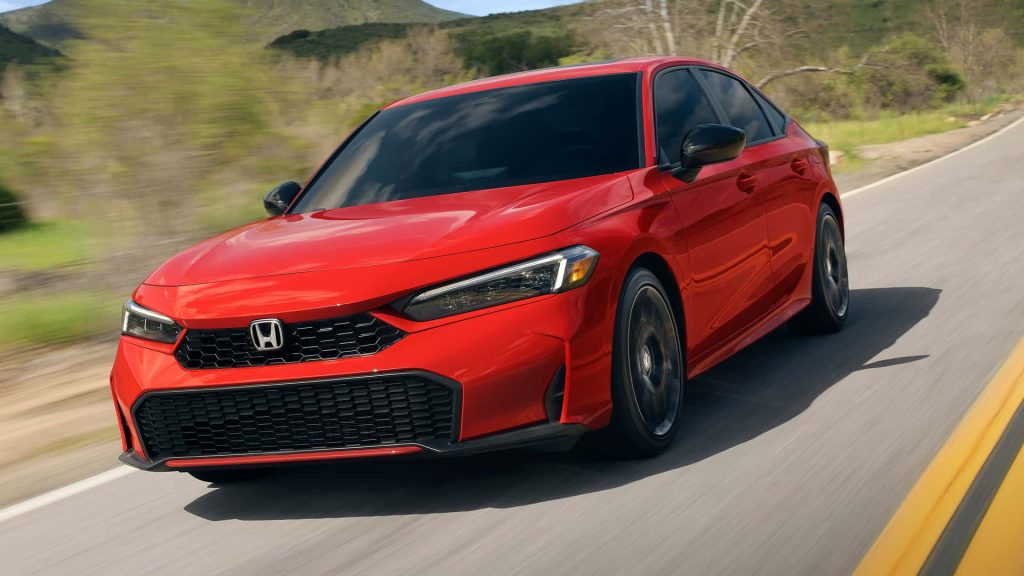
While some of the lower trims may not be as quick as the sportier versions, they still offer plenty of driving enjoyment. The combination of a well-appointed interior, a strong suite of standard safety and driver-assistance features, and competitive entry-level pricing make the Civic an even more compelling choice.
In our Civic Hybrid First Drive, we highlighted how this new hybrid enhances what was already a strong Civic foundation. It delivers a responsive, smooth ride and handles rough road surfaces, like large potholes, with confidence. While it’s not as sporty as the Civic Si or the Civic Type R, it still knows how to deliver driving fun.
One recurring complaint with past Civic models was excessive interior noise, but we’re happy to report that has been addressed. During our test drive in a top-trim Civic Hybrid, we found it easy to hold a quiet conversation at freeway speeds. Efficient, powerful, and priced competitively, the new hybrid may very well represent the sweet spot in the Civic lineup.
Even though the 2025 Civic is technically just a refresh, the powertrain options see significant changes. The previously available 180-hp 1.5-liter turbocharged four-cylinder engine has been dropped from the base lineup.
Instead, the standard engine is now a 2.0-liter four-cylinder that delivers 150 horsepower and 133 lb-ft of torque, paired with a CVT automatic transmission. With this setup, the Civic sedan returns 31–32 mpg in the city and 39–41 mpg on the highway, depending on trim.
Higher trims now feature a new hybrid powertrain that pairs a 2.0-liter four-cylinder engine with two electric motors. This system delivers a total output of 200 horsepower and 232 lb-ft of torque. Fuel economy takes a notable leap forward, with Honda estimating 50 mpg in the city and 47 mpg on the highway.
The Civic Si remains a part of the lineup and still produces 200 horsepower and 192 lb-ft of torque, utilizing a 1.5-liter turbocharged engine mated exclusively to a six-speed manual transmission. It offers a respectable fuel economy of 27 mpg city and 37 mpg highway.
As for the Civic Type R, Honda hasn’t released specs for the 2025 model yet, but historically, this high-performance variant has produced 315 horsepower. We expect the 2025 version to deliver a similarly thrilling driving experience.
Some may wonder whether the introduction of a two-motor hybrid system in the 2025 Civic could open the door for an all-wheel-drive option. However, that isn’t the case.
Unlike dual-motor electrified vehicles where motors are placed at both the front and rear axles to provide AWD, the Civic Hybrid’s two motors are positioned side-by-side and integrated into the transmission. A previous version of this setup also placed the motors on the same axis as part of the transmission system.
This means that AWD isn’t currently possible with this configuration. Even though the CR-V Hybrid, which shares this powertrain, is available with AWD, Honda has chosen to keep the Civic strictly front-wheel drive for now.
It’s a bit disappointing, especially considering that Honda has the capability to implement it. Interestingly, there’s a small but growing trend among enthusiasts who convert older Civics to AWD—maybe they’re onto something after all.
Also Read: 12 Worst GM Cars Ever Built and 10 of the Best
2. BMW 2 Series
The BMW 2 Series stands out as a top contender among the best cars for big cities and urban living. Its small footprint and agile performance make it a perfect match for narrow streets and heavy traffic. This model retains the performance DNA synonymous with BMW, especially in higher trims like the 240i.
Combining sporty dynamics with a refined interior, the 2 Series delivers comfort and sophistication alongside engaging driving. Responsive steering and an efficient engine ensure a spirited experience in the city.
Compact luxury coupes are becoming increasingly rare, yet BMW remains committed to keeping them alive. The 2-series coupe stands as a modern continuation of this fading category.
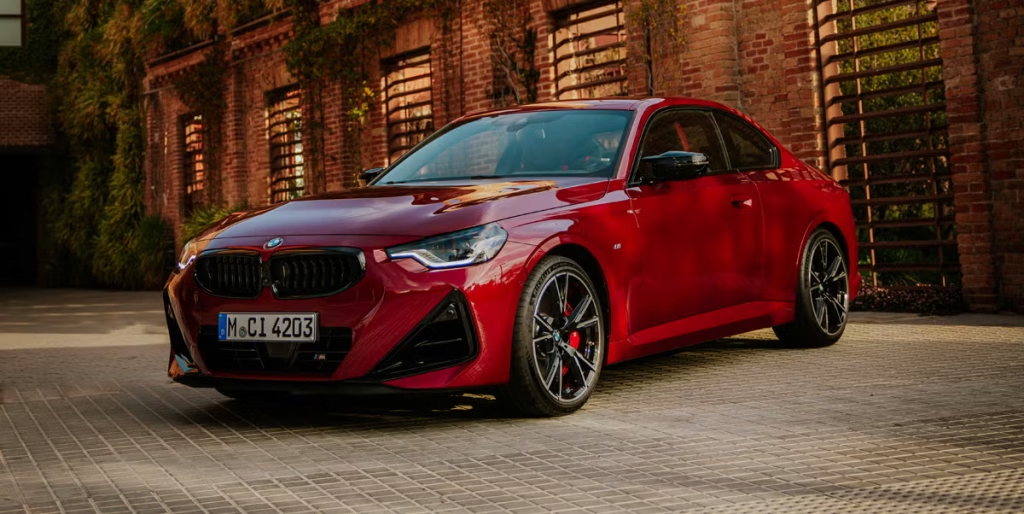
While the M2—its flashier and more aggressive sibling—secures the top-tier performance title, the standard 2-series offers a more composed, well-rounded driving experience without sacrificing the sharp steering, confident braking, and dynamic capability that define the BMW brand. Buyers can choose between two trims: the 230i and the M240i, both of which come with either rear-wheel or all-wheel drive.
The 230i is powered by a 255-hp turbocharged inline-four engine, which is also found in the Toyota Supra 2.0. Meanwhile, the M240i—though technically not a full “M” car but rather an “M Sport” version—steps up the power with a 382-hp turbocharged inline-six.
Regardless of these distinctions, both versions of the 2-series capitalize on their compact proportions and lively powertrains to offer an engaging drive that elevates daily commuting.
While the 2-series does incorporate elements of BMW’s newer, often polarizing design language, its use here is more restrained compared to the bolder styling seen on some of the brand’s larger vehicles. Most of the bodywork remains true to the timeless coupe silhouette.
For the 2025 model year, there are no major design overhauls, but buyers will find a handful of new exterior color options and wheel designs. Aside from those small updates, the 2-series continues to deliver its winning formula of comfort and athleticism, paired with a cabin that offers a commendable mix of luxury and refinement.
3. Hyundai Elantra
The Hyundai Elantra makes a strong case among the best cars for snowy cities and top affordable city cars. Its compact design and fuel efficiency are ideal for urban use, while advanced safety technologies provide added assurance in adverse weather.
Offering a smooth ride and a well-appointed cabin, the Elantra ensures both comfort and practicality in city settings. Its affordability and impressively low maintenance costs make it a financially savvy option.
The standard nonhybrid Elantra comes equipped with a naturally aspirated 2.0-liter four-cylinder engine, delivering a modest 147 horsepower and 132 pound-feet of torque in the SE and SEL trims.
For drivers seeking more spirited performance, the N Line variant trades displacement for turbocharging with a 1.6-liter turbocharged engine that produces a much more engaging 201 horsepower and 195 pound-feet of torque. The hybrid versions also use a 1.6-liter four-cylinder engine, but instead of a turbo, it’s paired with an electric motor.

This setup results in slightly less horsepower than the base engine—coming in at 139 horsepower—but it matches the N Line’s torque output at 195 pound-feet, offering a solid blend of efficiency and response.
Elantras equipped with the base 2.0-liter engine are paired with a CVT (continuously variable transmission), while the turbocharged N Line and the fuel-efficient hybrid models both utilize a DCT (dual-clutch transmission).
Notably, the N Line receives a seven-speed DCT, whereas the hybrid versions are fitted with a six-speed DCT. The standout performer in the Elantra lineup is undoubtedly the enthusiast-focused Elantra N, which is reviewed separately.
However, “those who can’t quite stomach that car’s price tag could consider the tamer N Line model.” Following a brief test drive, we were left impressed by the N Line’s noticeably quicker acceleration and well-balanced handling, which boosts the car’s athletic appeal without sacrificing comfort.
4. Subaru Impreza
The Subaru Impreza earns its place among the best cheap city cars and top urban vehicles. Its compact frame, signature boxer engine, and all-wheel-drive system make it adept at handling both city streets and variable weather, offering strong stability and control.
With a roomy interior and good fuel efficiency, the Impreza balances comfort and practicality for city life. It’s also known for reliability and low upkeep costs, making it an intelligent urban driving choice.
The 2025 Subaru Impreza is a compact hatchback and remains one of the most affordable vehicles available today. Last year, the Impreza was completely redesigned, bringing refreshed styling both inside and out, new technology, and an increase in standard features.
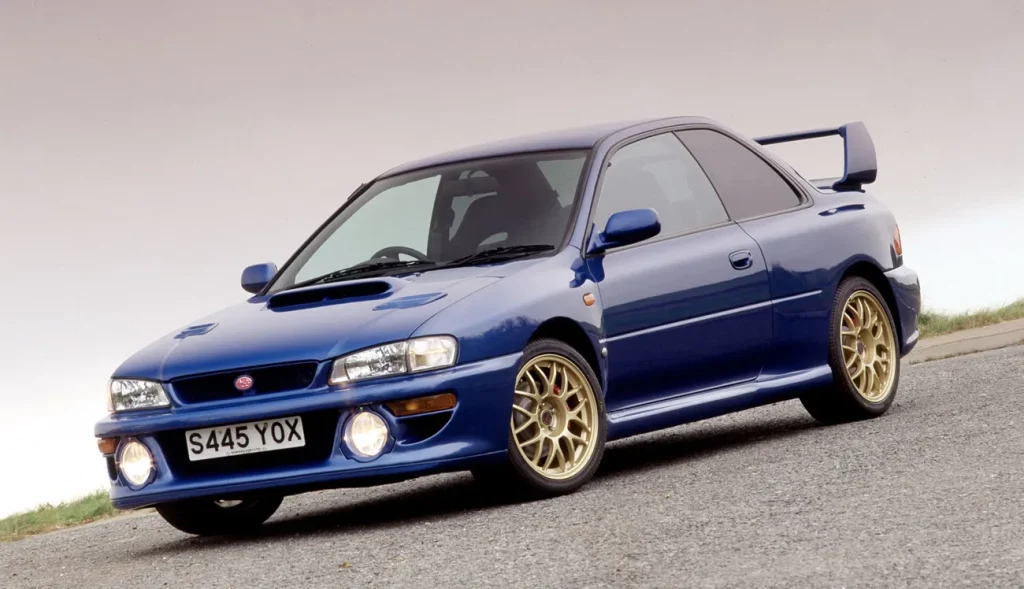
One of the most significant changes with this redesign was Subaru’s decision to eliminate the sedan variant from the lineup, leaving the Impreza hatchback as the sole option.
While some may mourn the sedan’s departure, we’ve always believed the Impreza hatchback offered a better value due to its greater utility. For 2025, the Impreza remains unchanged.
5. Mazda 3
The Mazda 3 shines as one of the best cars for city living and ranks high among small city cars. Its sleek design and precise handling allow drivers to navigate tight corners and heavy traffic with ease.
Equipped with Mazda’s cutting-edge Skyactiv technology, the Mazda 3 delivers a dynamic driving experience along with a sophisticated interior. Its efficiency and affordable maintenance add to its practicality in an urban environment.
The Mazda 3 is a mainstream compact sedan that punches above its weight. It can almost pass for a premium-class compact, as its top trim levels boast elegantly furnished interiors lined with materials that exude a sense of luxury that rivals like the Hyundai Elantra and Honda Civic just cannot equal.
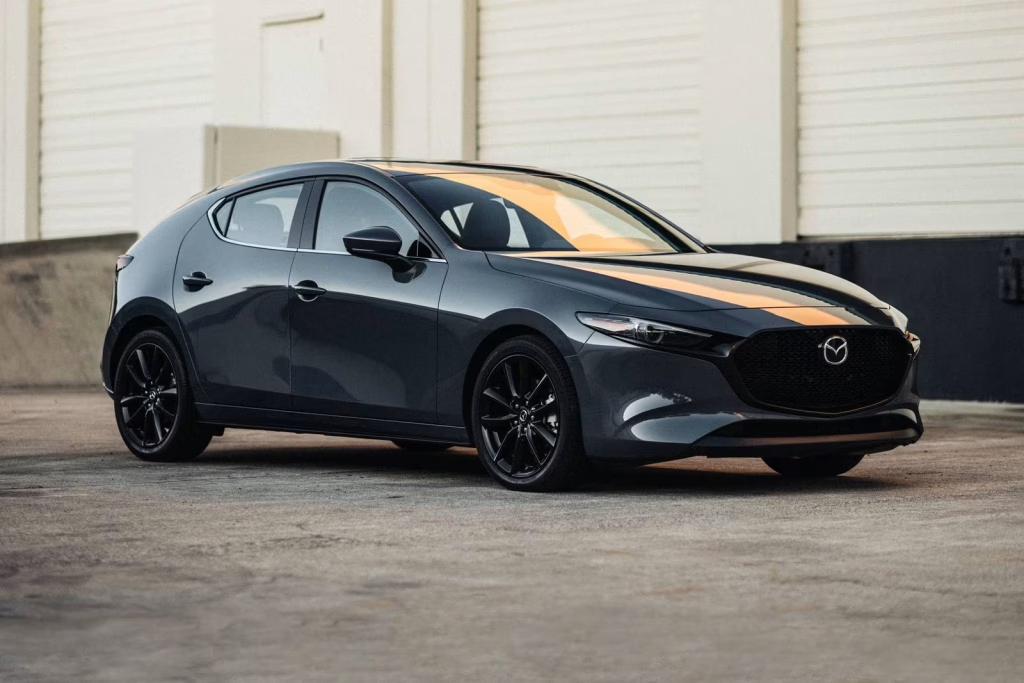
Offered as a four-door sedan or a five-door hatchback, the hatch is positioned as the more upscale model of the two. Despite being several inches shorter in overall length than the sedan, the five-door costs more.
Power comes from a 2.5-liter four-cylinder engine, either with or without a turbocharger, mated to a six-speed automatic or six-speed manual transmission. However, manual gearboxes are limited to nonturbo models with front-wheel drive.
All-wheel drive is offered, but only with the six-speed automatic transmission. As is the Mazda norm, the 3 delights its driver with its balance. It’s fun to drive yet dispenses its agility with a comfortably smooth ride. Its elegant exterior and plush interior combine to create a delectable compact that has far more allure than you’d expect for the price.
Cars That Are Worst in Traffic
When it comes to traffic-heavy city driving, some cars just make everything worse. Not all cars are built for the daily grind of bumper-to-bumper traffic. While some handle city congestion with ease, others turn every red light and slow crawl into pure frustration.
Whether it’s due to oversized dimensions, poor fuel efficiency, terrible visibility, or clunky handling, certain vehicles are simply not made for stop-and-go driving.
In this article, we break down the cars that perform the worst in traffic—models that might look impressive on paper or off-road, but fall flat when it’s time to navigate the urban grind.
1. Hummer H2
The Hummer H2 is a prime example. Its massive size, terrible fuel economy (around 10 mpg), and sluggish maneuverability make it a terrible choice for tight lanes or stop-and-go traffic. Parking it is a chore, and its poor visibility only adds to the headache.
As challenging as the “road” may seem, it poses little trouble for the original Hummer. Thanks to its 16.0 inches of ground clearance and fully independent suspension, the H1 requires far less strategic consideration than the newer H2.
Rather than stressing over the terrain, drivers of the H1 typically just glance at the surroundings, aim, and proceed without hesitation, going pretty much anywhere.
In comparison, the H2, with about six fewer inches of ground clearance, demands more thought when the terrain becomes particularly rough. General Motors’ engineers were cautious about increasing the center of gravity, which is why they opted not to add more clearance.
Consequently, whereas the H1 could easily straddle a large rock without a second thought, an H2 driver might want to carefully position a tire on the rock and drive over it instead.
The H1 also has less front overhang, allowing it to approach steeper inclines than the H2. For example, with a winch, the H1 can handle an approach angle of 47.0 degrees, while the H2 (without a winch) manages only 43.6 degrees.
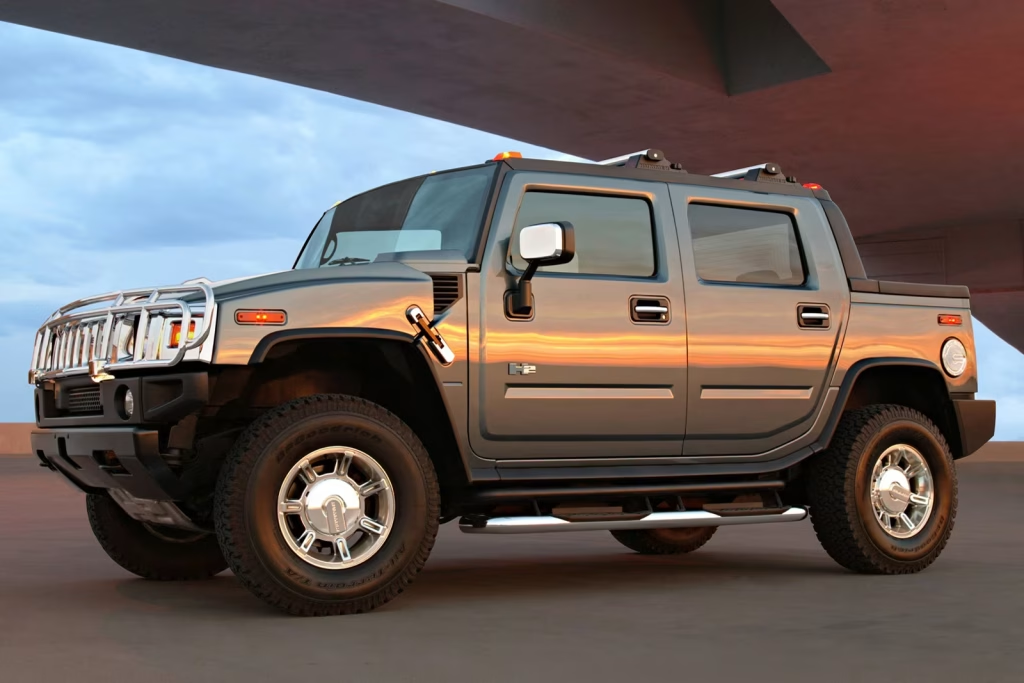
In contrast, the 19.8-degree approach angle of the H2’s cousin, the Tahoe, means that drivers of the Chevy should find an alternative route, as it can’t compare to either the H2 or H1.
When descending those steep slopes into the Arroyo San Javier—a winding, occasionally flooding river that divides the dirt road trail—the H2 is just as capable as the H1, with no more risk of damage.
Day after day, we navigate Baja’s most isolated and breathtaking regions. For hours, we jolt, slide, and climb through the rugged landscape, rarely encountering other vehicles or people, occasionally passing a few stray cattle.
We move through mountains, past abandoned mines, and along the edge of a 2000-foot mesa, enjoying views that seem to stretch across all of Baja.
The majority of the land here is harsh and dry, in that eerie, barren, desolate way. The cacti and thorny bushes create a landscape that clearly says “look, but don’t touch.”
Along the sandy trails of this terrain, the Hummers glide comfortably at speeds of 40 mph, slowing only slightly when the surface becomes harder and rougher with washboards.
Also Read: Top 10 Worst and 10 Best Trucks for Towing
2. Ford F-250 Super Duty
Similarly, the Ford F-250 Super Duty is built for towing and off-road hauling, not urban commuting. It’s wide, tall, and long, making it extremely difficult to navigate through narrow streets or park in tight spots. It also guzzles fuel while you sit in bumper-to-bumper traffic.
If the F-150’s towing and payload capacities don’t meet your requirements—or if you’re specifically looking for the Power Stroke diesel engine—then upgrading to the 2025 F-250 Super Duty might be the right choice.
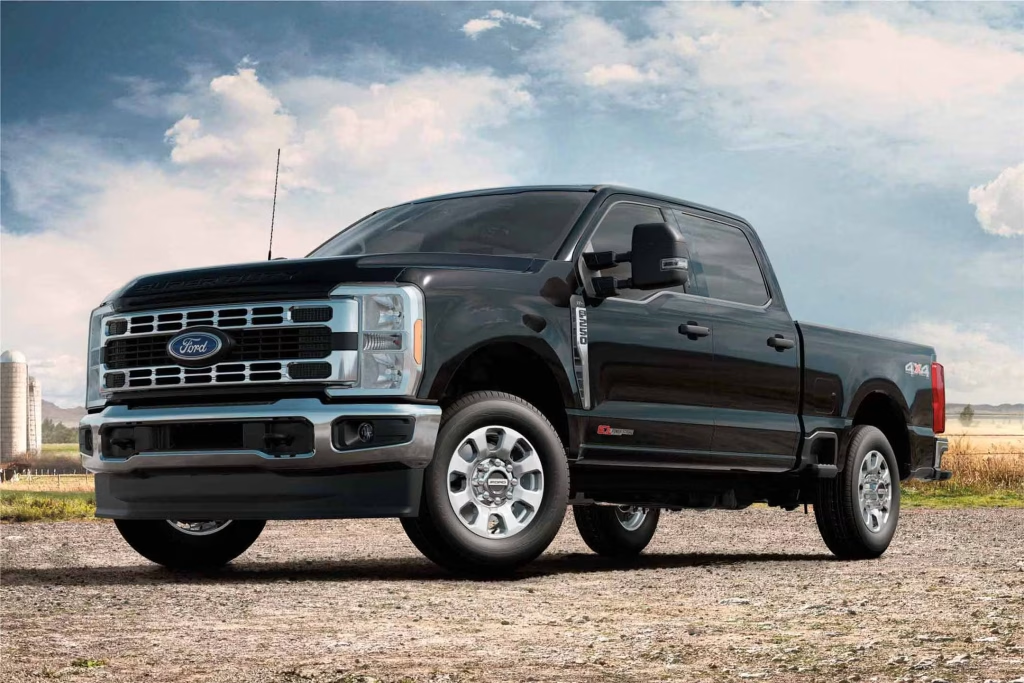
The F-250 offers more than enough capability for most truck owners, sitting just below the even more powerful F-350, which comes with the option of a dual-rear-wheel (DRW or dually) configuration. As a heavy-duty (HD) truck, the F-250 excels thanks to its selection of four robust engines, which deliver class-leading performance.
It also boasts a comprehensive array of towing and hauling technologies, such as Onboard Scales with Smart Hitch. Available in trims ranging from the basic XL to the top-tier, luxurious Limited, the F-250 is a versatile and capable option for those who need a serious truck.
3. Chevrolet Camaro
Another car that suffers in city congestion is the Chevrolet Camaro, especially the manual version. While it’s great on open roads, the cramped interior and poor visibility make city driving a pain. Constantly shifting gears in heavy traffic becomes exhausting, and the stiff suspension doesn’t do any favors over potholes or speed bumps.
After more than eight years of the current sixth-generation Camaro, Chevrolet is preparing for a new chapter. While we eagerly await more details on what’s next, the current version of this beloved muscle car is set for its final lap.
Every 2024 Camaro features rear-wheel drive and comes in two body styles: coupe and softtop convertible. The powertrain options include a 335-hp V-6 and a thrilling 455-hp V-8, with the high-performance 650-hp Camaro ZL1 reviewed separately.
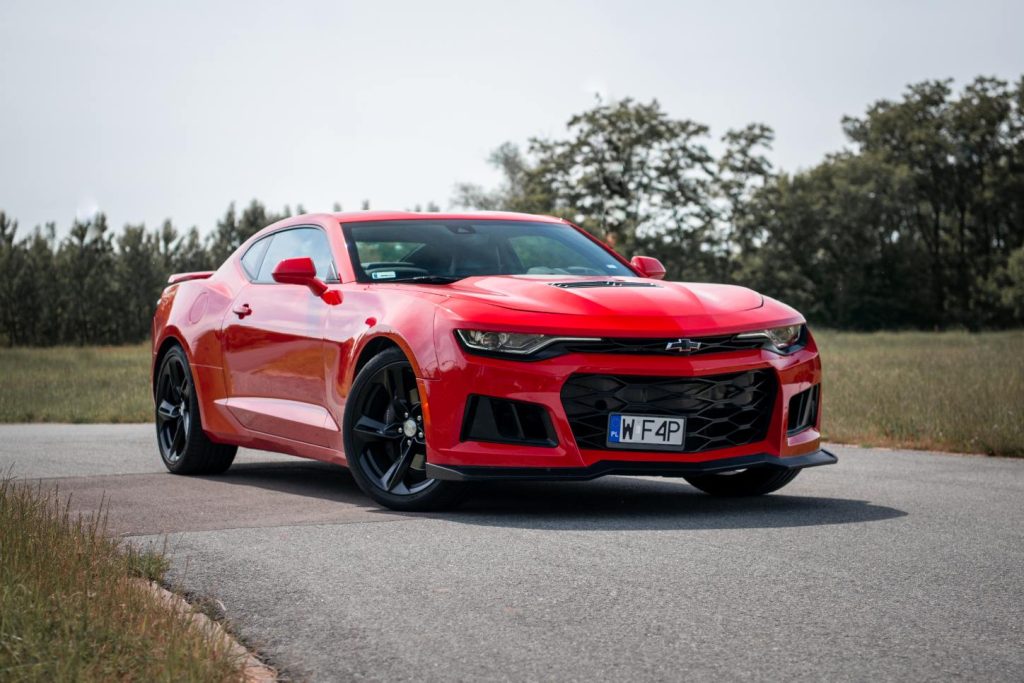
As for its rivals, Ford has unveiled a new Mustang, while Dodge has retired the iconic Challenger. Chevy has confirmed that the Camaro will make a return at some point, likely incorporating some form of electrification. In the meantime, we’ll enjoy the thunderous roar of its pushrod V-8.
In 2024, Chevy is waving the checkered flag for the sixth-generation Camaro. While this doesn’t mark the end of the Camaro line entirely, the sixth-generation model, which has been thrilling drivers since the 2016 model year, will be honored with a special Collector’s Edition for its final year.
While Chevy hasn’t fully disclosed the specifics of what the Collector’s Edition will entail, it’s confirmed that it will be available on the RS and SS models, as well as a limited number of ZL1 variants. We’re still holding out hope for one final run of Z/28s before the sixth-gen Camaro’s production wraps up.
4. Jeep Wrangler
The Jeep Wrangler, particularly older models, also struggles in traffic. Its bouncy ride, rough steering, and noisy cabin were designed more for trails than for urban streets. The turning radius and lack of refinement become obvious liabilities in city conditions.
On paved roads, the Wrangler lacks the refinement that most compact SUVs offer, with a rough ride and unresponsive steering that detract from its on-road comfort. However, the situation changes when this SUV is taken off-road, where it excels.
It easily tackles tough terrain, proving itself to be the most capable off-roader in its segment. The Wrangler is available with a range of powertrains, including a standard 285-horsepower V6 engine, a 270-horsepower turbocharged four-cylinder, and a strong 470-horsepower V8.
While the base engine is decent, the optional powertrains are far more engaging. The V8 stands out as the best choice, offering a substantial acceleration boost over the standard engine. There is also the plug-in hybrid Jeep Wrangler 4xe, which is reviewed separately.
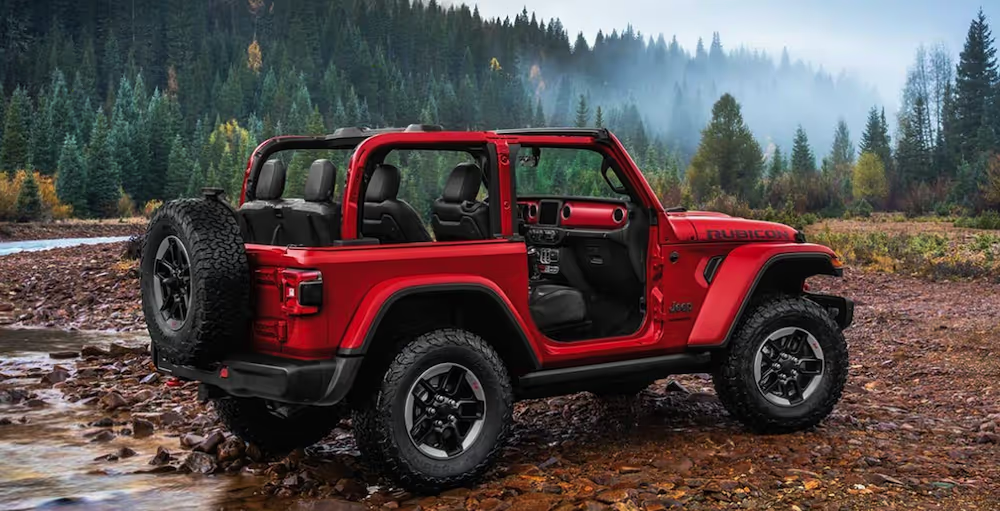
Regarding fuel economy, the base two-door 2025 Wrangler with a manual transmission and V6 engine gets 17 mpg in the city and 23 mpg on the highway.
While the EPA estimates for this engine with the automatic transmission were not available at the time of writing, the nearly identical 2024 model with this powertrain achieves 18 mpg city and 24 mpg highway.
The four-door version with the V6 and manual transmission gets 16 mpg city and 22 mpg highway. Models with the turbocharged four-cylinder engine offer up to 20 mpg city and 23 mpg highway, while those with the V8 return up to 13 mpg city and 16 mpg highway. These figures place the Wrangler at the lower end of the compact SUV class in terms of fuel efficiency.
5. Tesla Model X
Lastly, there’s the Tesla Model X, which might seem like an odd choice for this list due to its electric drivetrain. While smooth and powerful, its oversized body and gimmicky Falcon Wing doors create more problems than they solve in tight urban environments.
The width of the vehicle and awkward door mechanics can be frustrating in crowded parking lots or narrow spaces. All five of these vehicles prove that bigger, flashier, or more rugged doesn’t always mean better—especially when you’re stuck in traffic.
The Model X, Tesla’s larger luxury electric SUV, slots above the Model Y in the company’s lineup. Built on the same platform as the long-established Model S sedan, it offers the same powertrain options: one that is powerful and one that is overpowered. The Model X introduces the option of a third row of seats, increasing passenger capacity from five to either six or seven.
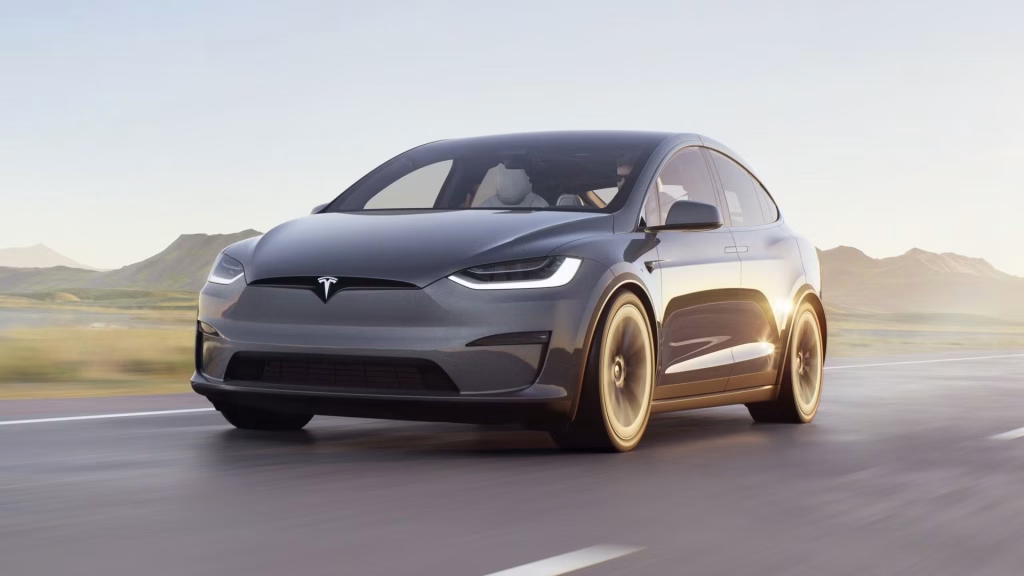
These seats are accessed through power-operated doors: conventional hinged doors for the front seats and dramatic supercar-inspired gull-wing doors—referred to as falcon-wing doors—leading to rows two and three. The Plaid version of the Model X tops out at 1020 horsepower, while the standard All-Wheel Drive model delivers 670 horsepower.
The EPA estimated range for the All-Wheel Drive model reaches 335 miles, just nine miles more than the Plaid variant. Inside, however, the Model X’s interior does not match the excitement of its power and range. Its design and materials feel less refined than what would be expected in a luxury vehicle with a price tag approaching $100k for the top model.
While we appreciate, though don’t always love, Tesla’s innovative tech approach, we would prefer physical buttons for many functions that are instead integrated into the central touchscreen. Additionally, we’re not entirely convinced by the Model X’s standard rectangular steering yoke, which replaces a traditional round steering wheel.

